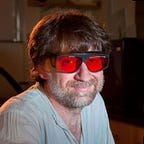What Is Cold Atom Physics?
Dr. Andrew Kortyna is a Boulder, Colorado-based particle physicist and academic. Since 2019, he has worked with ColdQuanta, Inc., a quantum technology development institute. There, Dr. Andrew Kortyna engages in research efforts involved with the development of a cold atom-based atomic clock.
Cold atom physics is a field of physics that emphasizes quantum gasses and ultra-cold atoms. In recent years, it has evolved into the most rapidly expanding field of physics, not to mention the most interdisciplinary.
At its core, the experimental branch of cold atom physics represents a union of atomic, molecular, and optical physics. These fields work together and allow physicists to explore complex many-body problems, which can be defined as the difficulties associated with predicting the behavior of systems consisting of multiple quantum particles.
Experimental cold atom research mainly involves cooling atoms down to extremely low temperatures, allowing physicists to study essential physical properties in a manner not typically possible under normal Earth conditions.
The theoretical branch of cold atom physics, meanwhile, is even more interdisciplinary in nature. A variety of professional physicists engage in theoretical cold atom projects, including nuclear physicists, condensed matter experts, and high energy physicists.
In addition to monitoring complex, multi-particle systems under more favorable conditions, cold atom research has some real-world applications. Atomic clocks, GPS technology, and several types of highly accurate sensors all rely on cold atom physics. Cold atoms provide the developers of these applications with a high degree of control over internal systems, which is critical when it comes to precision-based technologies and devices.
